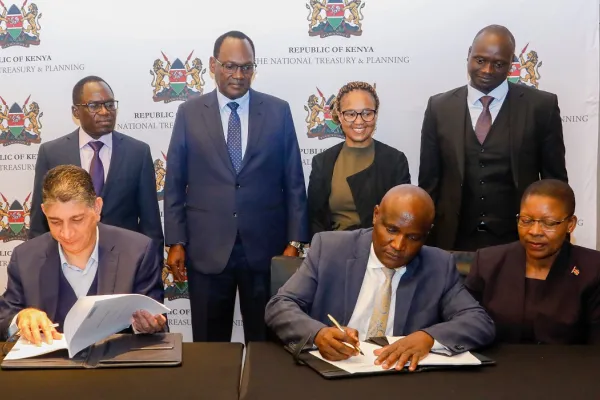Kenya remains at high risk of debt distress—World Bank

World Bank Division Director Qimiao Fan.
The World Bank has warned that Kenya remains at high risk of debt distress. According to the global lender's latest Kenya Economic Update unveiled on Monday, the country's stock of public debt increased to 68.8 percent of the GDP in FY24/25, up from 67.5 percent in FY23/24, with domestic debt at 53.6 percent of the total.
Statistics from the World Bank show that Kenya's net domestic borrowing hit 5 percent of GDP. during the period under review. Kenya’s infrastructure spending, social programmes, and debt repayments have been the key drivers of the country's debt stock.
"Fiscal strains are deepening as public revenues continue to underperform. Public debt has continued to rise, with a large portion of it being domestic debt, increasing risks," stated World Bank Division Director Qimiao Fan during the release of Kenya Economic Update report.
The sentiments by the World Bank come just weeks after authorities in Kenya announced they have converted three biggest debt obligations from China from US dollars to renminbi. The loan, originally $5 billion, was first secured in 2014 to finance the construction of the Nairobi Mombasa Standard Gauge Railway.
According to Treasury Cabinet Secretary John Mbadi, the conversion of the loan from USD to Chinese currency was part of a bold push to ease the pressure on the country's debt stock, which nearly doubled as percentage of the GDP between 2013 and 2023.
At the moment, China is by far the largest bilateral lender to Kenya and the railway loans have proven too costly over the years.
While the repayment interest for two of Kenya's railway loans from China were set at 3 and 3.6 percent above the US market rate, their interest had more than doubled by 2023. Treasury said the switch to Chinese yuan as well as the re-profiling of their maturities will see Kenya pay a 3 percent interest rate while saving $215 million in costs related to servicing the debt.
Meanwhile, World Bank has projected that Kenya will record nearly 5 percent economic growth this year powered by activity in the construction sector. This projection is 0.4 percentage upgrade from the 4.5 percent forecast which the global lender announced in May.
At the same time, the World Bank noted steady flow of inflows from the diaspora, improved export receipts, and inflows from Eurobond and finance from development partners have seen Kenya’s forex reserves rise to an all-time high of $12.19 billion (KES1.57 trillion) as of October 30, 2025. This represents 5.3 months of import cover, well above the statutory minimum of four months. Last week, the Central Bank reported that the country's forex reserves stood at $12 billion.





